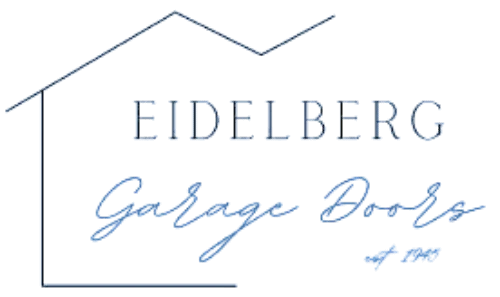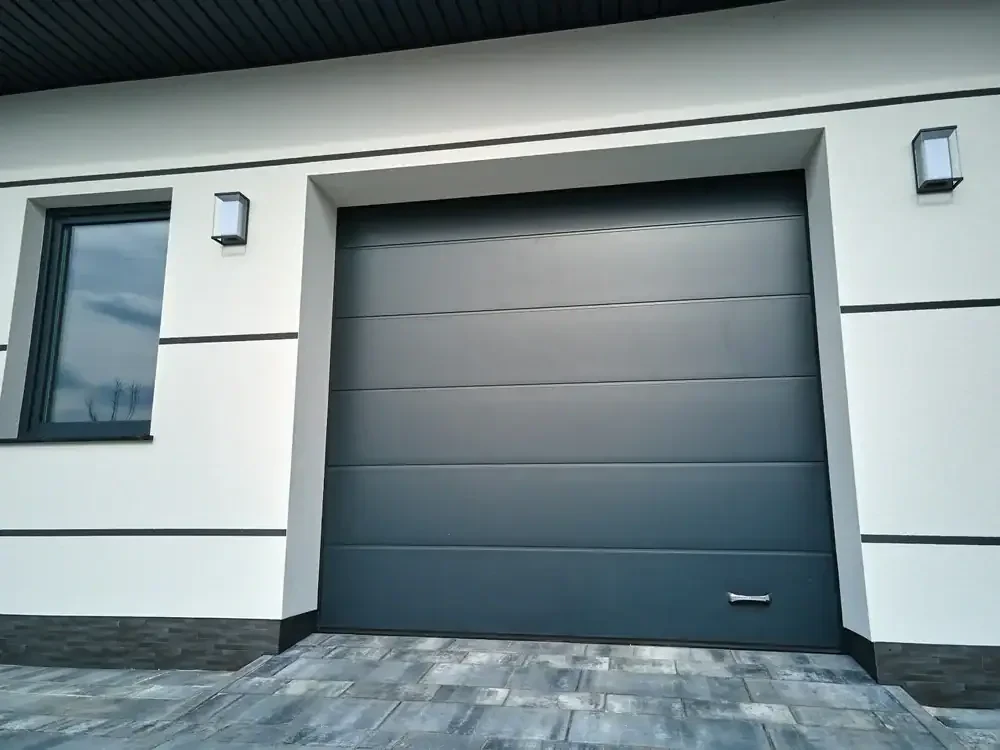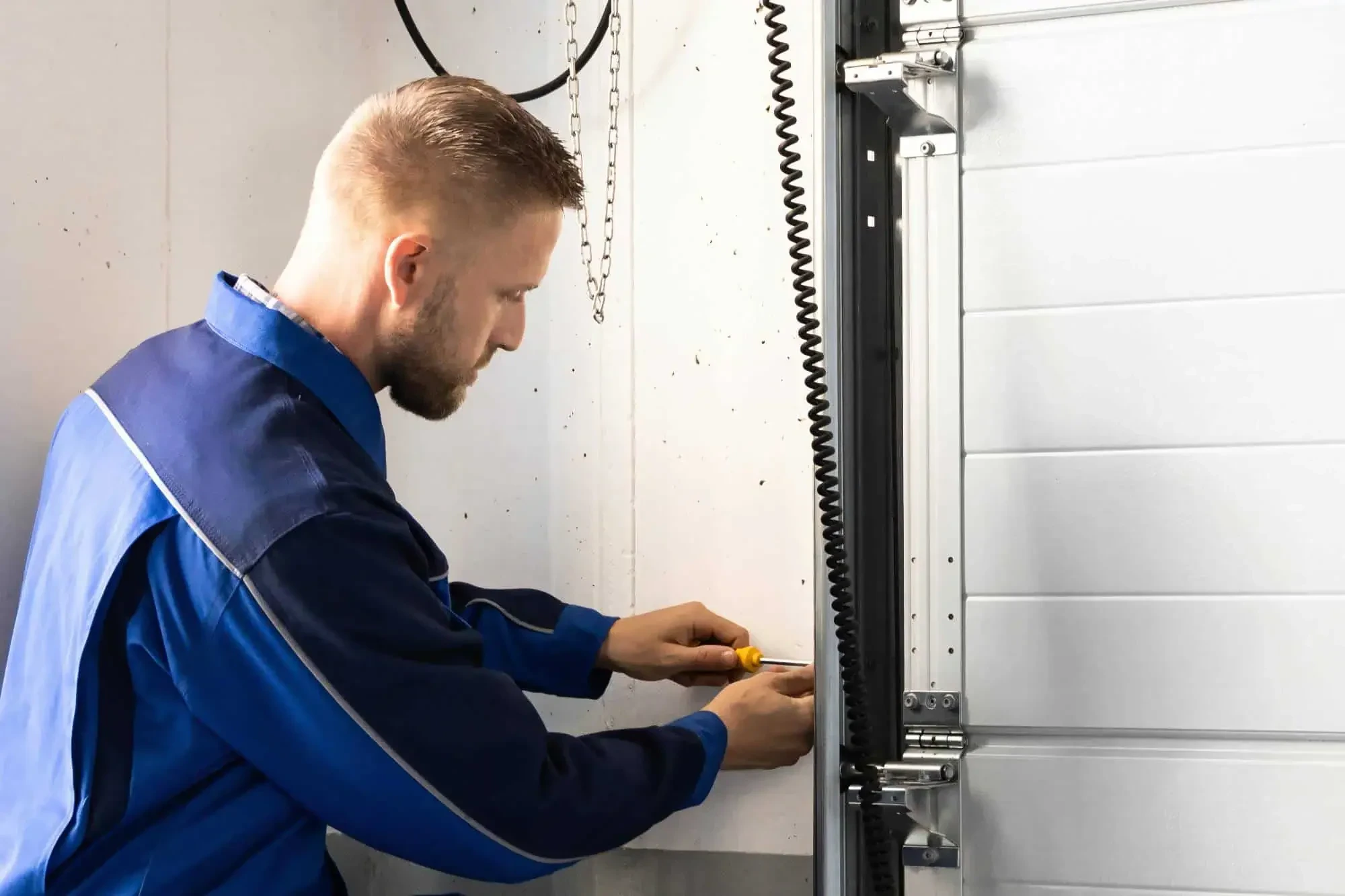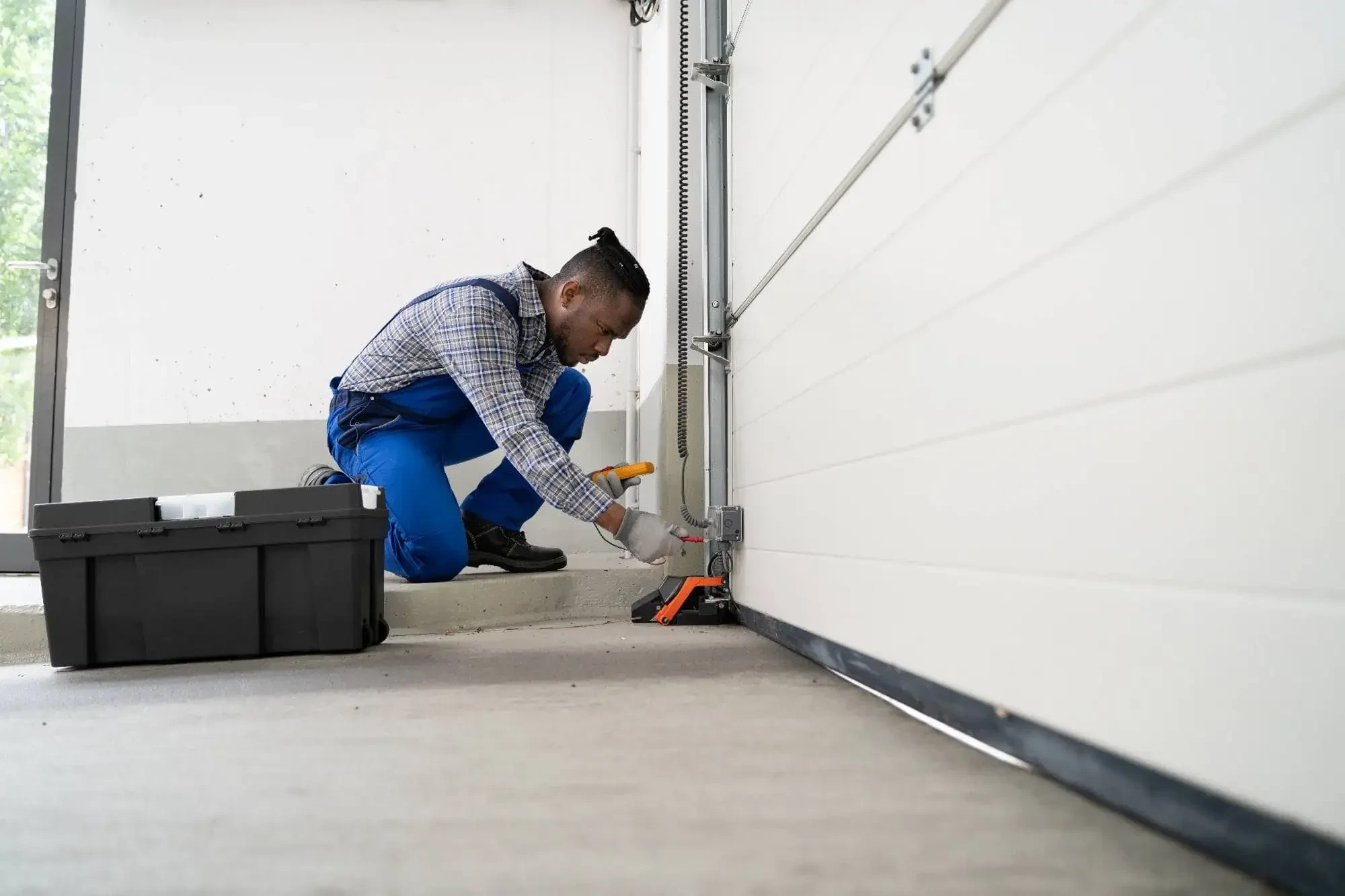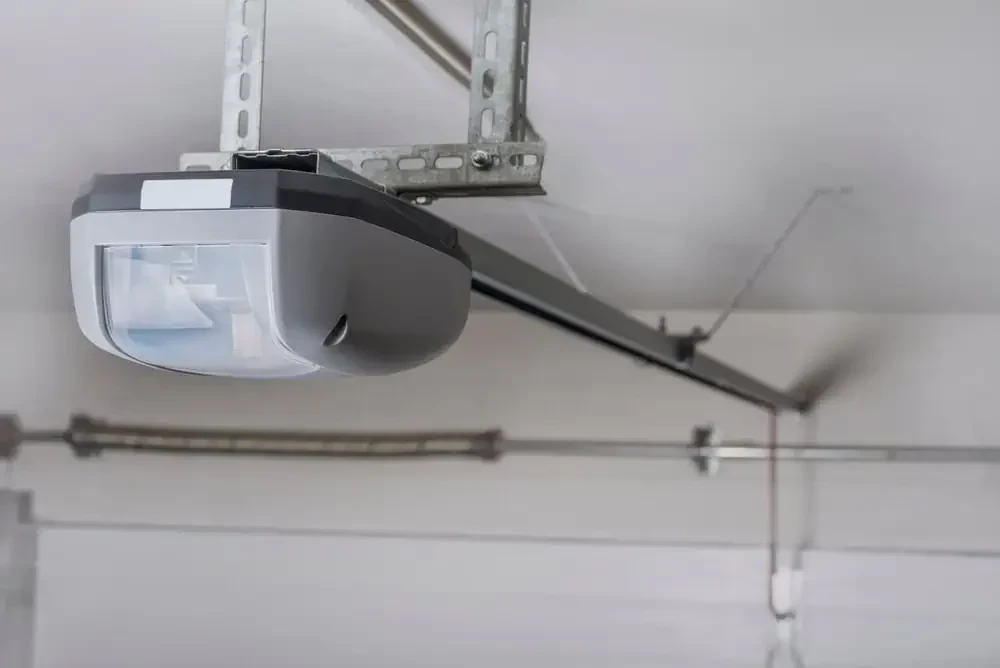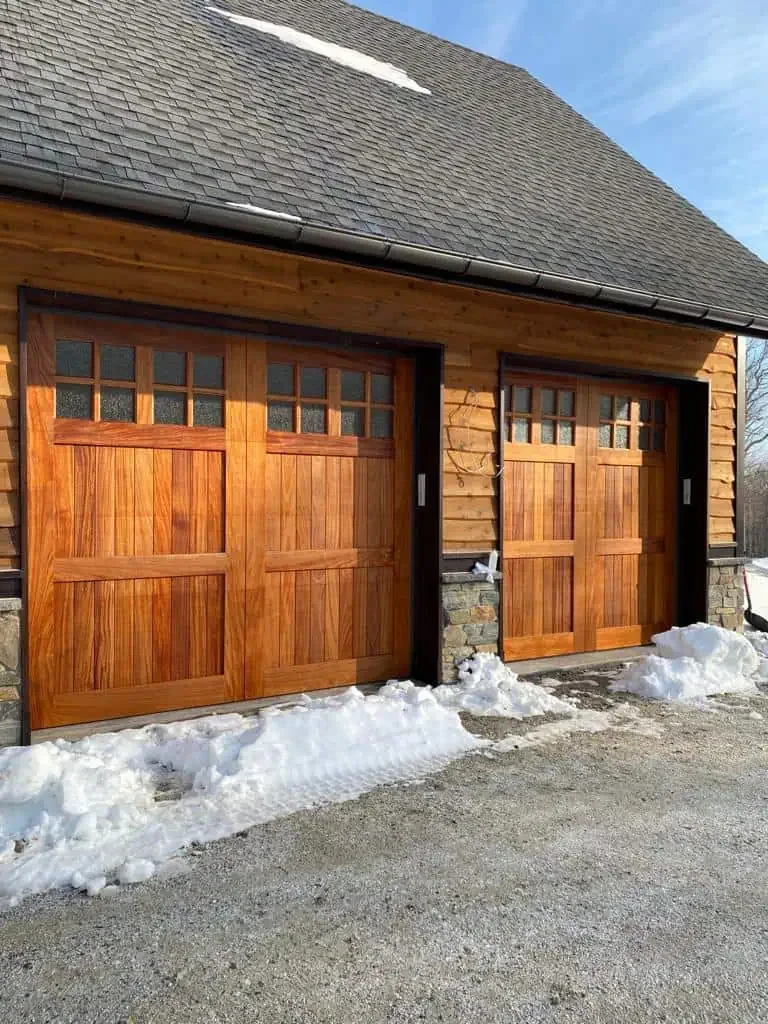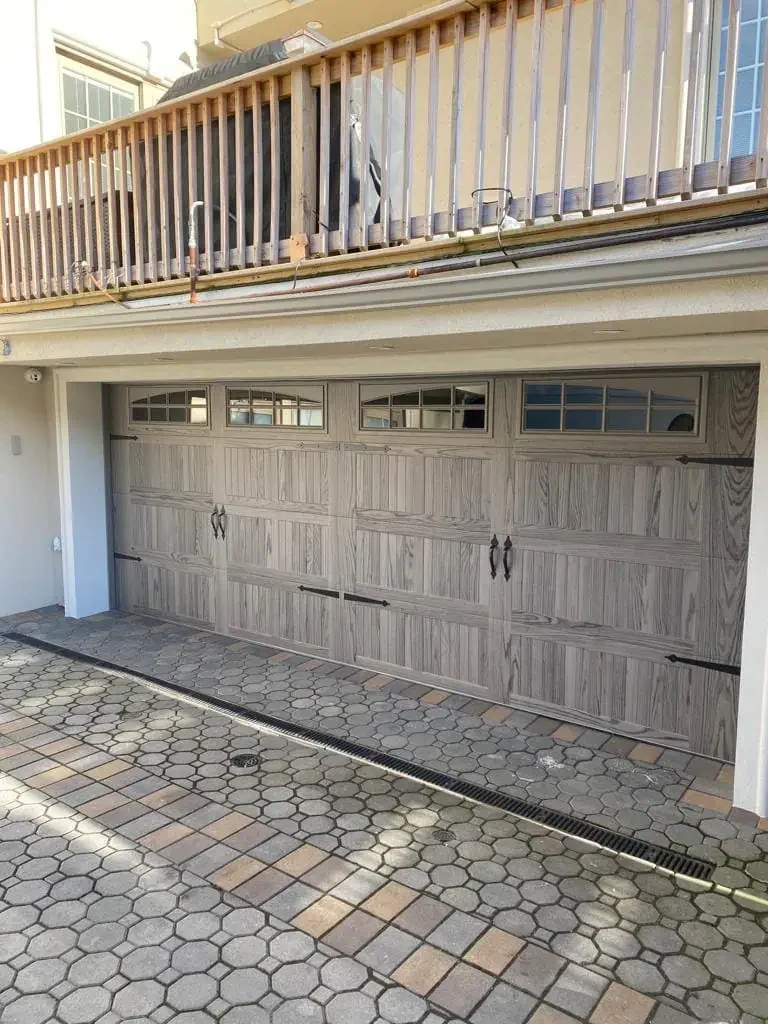Summary:
How Long Island Weather Damages Your Garage Door
Long Island’s coastal location creates a perfect storm of conditions that accelerate garage door wear. The salt air doesn’t just smell like the ocean—it’s actively corroding every metal component on your door.
Your springs, hinges, rollers, and tracks are constantly exposed to moisture-laden air that carries salt particles inland. This combination speeds up rust formation by months or even years compared to inland areas.
Add in humidity levels that regularly spike above 70%, and you’ve got an environment where metal components deteriorate faster, weatherstripping fails sooner, and electrical systems face constant moisture challenges. Understanding these conditions is the first step to protecting your investment.
Salt Air Corrosion: The Silent Garage Door Killer
Salt air doesn’t announce itself with dramatic failures. Instead, it works quietly, day after day, breaking down the protective coatings on your garage door components. You might notice small rust spots appearing on springs or hinges, but by the time you see visible corrosion, the damage has already been building for months.
The process starts with salt particles settling on metal surfaces. When moisture from humidity or rain hits these particles, it creates a highly corrosive environment that eats through protective finishes and attacks the underlying metal. Your garage door springs are particularly vulnerable because they’re under constant tension, which creates microscopic stress points where corrosion can take hold.
This is why garage doors near the coast often need spring replacements years earlier than their inland counterparts. The salt doesn’t just cause surface rust—it weakens the entire structure of the metal, leading to sudden failures that can leave you stranded.
The solution isn’t just hoping for the best. You need a proactive approach that includes regular cleaning to remove salt buildup, protective coatings to create barriers against corrosion, and more frequent lubrication to displace moisture from moving parts. Think of it as sunscreen for your garage door—protection that needs regular reapplication to stay effective.
Many homeowners make the mistake of treating visible rust as a cosmetic issue. In reality, any rust you can see represents significant structural damage that’s already occurred. The key is preventing that damage in the first place through consistent maintenance designed specifically for coastal conditions.
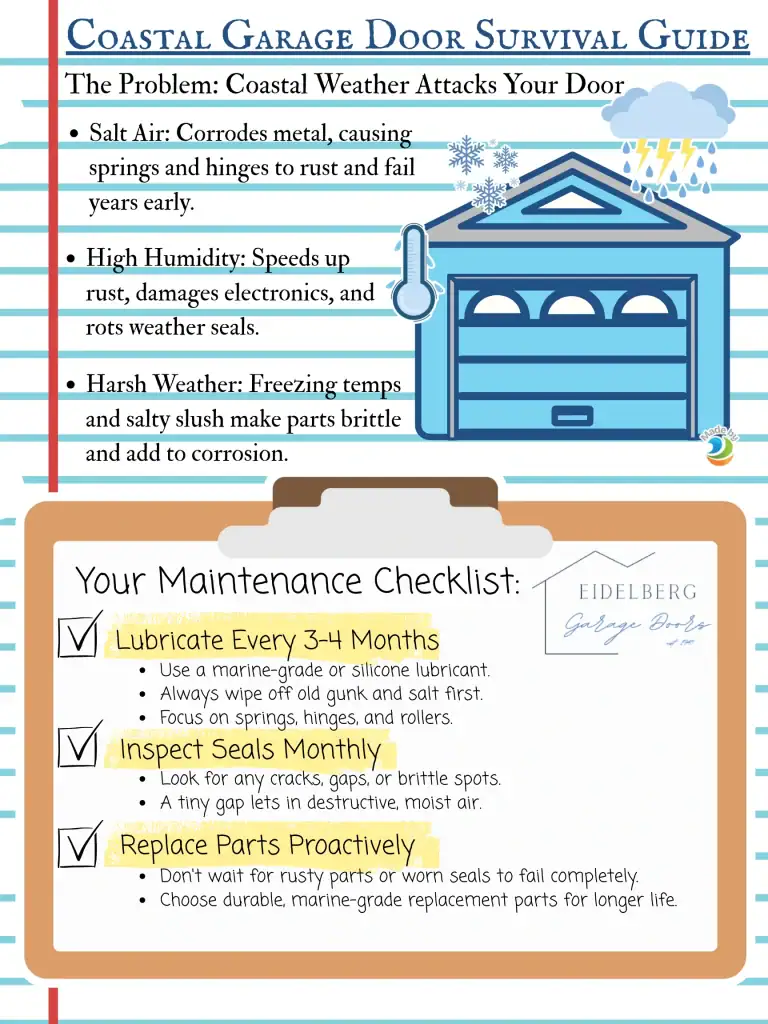
Humidity's Hidden Impact on Garage Door Performance
Salt air doesn’t announce itself with dramatic failures. Instead, it works quietly, day after day, breaking down the protective coatings on your garage door components. You might notice small rust spots appearing on springs or hinges, but by the time you see visible corrosion, the damage has already been building for months.
The process starts with salt particles settling on metal surfaces. When moisture from humidity or rain hits these particles, it creates a highly corrosive environment that eats through protective finishes and attacks the underlying metal. Your garage door springs are particularly vulnerable because they’re under constant tension, which creates microscopic stress points where corrosion can take hold.
This is why garage doors near the coast often need spring replacements years earlier than their inland counterparts. The salt doesn’t just cause surface rust—it weakens the entire structure of the metal, leading to sudden failures that can leave you stranded.
The solution isn’t just hoping for the best. You need a proactive approach that includes regular cleaning to remove salt buildup, protective coatings to create barriers against corrosion, and more frequent lubrication to displace moisture from moving parts. Think of it as sunscreen for your garage door—protection that needs regular reapplication to stay effective.
Many homeowners make the mistake of treating visible rust as a cosmetic issue. In reality, any rust you can see represents significant structural damage that’s already occurred. The key is preventing that damage in the first place through consistent maintenance designed specifically for coastal conditions.
Essential Maintenance Tasks for Long Island Garage Doors
Effective garage door maintenance on Long Island requires a different approach than standard maintenance guides recommend. You’re not just maintaining a mechanical system—you’re actively fighting environmental conditions that want to destroy your door.
The key is consistency and using the right techniques for coastal conditions. This means more frequent inspections, specialized products designed for marine environments, and understanding which components need extra attention in your specific climate.
Your maintenance routine should focus on three core areas: preventing corrosion, managing moisture, and maintaining proper lubrication. Each of these requires specific techniques and timing that align with Long Island’s seasonal weather patterns.
The Long Island Lubrication Strategy
Forget everything you think you know about garage door lubrication. Standard advice about “lubricating twice a year” doesn’t account for salt air, humidity, and temperature swings that can turn your lubricant into a corrosive paste within months.
On Long Island, you need to lubricate more frequently and use products specifically designed for marine environments. Silicone-based lubricants work better than petroleum-based products because they don’t attract moisture or break down as quickly in humid conditions. Apply lubricant to springs, hinges, rollers, and tracks every three to four months, not twice a year.
Before applying new lubricant, clean off the old material completely. This step is crucial because old lubricant mixed with salt and moisture becomes abrasive, actually accelerating wear on your components. Use a degreaser to remove buildup, then apply fresh lubricant while components are completely dry.
Pay special attention to your springs during lubrication. These components are under constant tension and are most vulnerable to salt air corrosion. A light coating of marine-grade lubricant can significantly extend their lifespan by creating a barrier against moisture and salt particles.
Your garage door tracks also need regular attention, but be careful not to over-lubricate. Too much lubricant in tracks attracts dirt and debris, which can cause binding and uneven wear. A light application on the curved sections where rollers make contact is sufficient.
Don’t forget about your garage door opener’s chain or belt drive system. These components are often overlooked but face the same environmental challenges as the rest of your door. Regular lubrication keeps them operating smoothly and prevents premature stretching or breaking.
Weatherstripping and Seal Maintenance for Coastal Conditions
Your garage door’s weatherstripping and seals are the first line of defense against Long Island’s harsh environment, but they’re also the most vulnerable components. Salt air, UV exposure, and temperature fluctuations cause rubber seals to deteriorate faster than in most other climates.
Inspect your weatherstripping monthly, not seasonally. Look for cracks, brittleness, or areas where the seal no longer makes complete contact with the door frame. Small gaps might seem insignificant, but they allow salt air to penetrate your garage, accelerating corrosion of internal components and reducing energy efficiency.
Replace weatherstripping at the first sign of wear, not when it’s obviously failing. In coastal environments, waiting until seals are visibly damaged means you’ve already allowed months of salt air infiltration. This proactive approach prevents more expensive problems down the road.
Choose weatherstripping materials designed for marine environments. Standard rubber seals break down quickly in salt air, while marine-grade materials resist UV damage and salt corrosion. The initial cost difference is minimal compared to the protection and longevity you gain.
The bottom seal of your garage door faces the harshest conditions, dealing with water runoff, road salt in winter, and direct exposure to weather. This seal typically needs replacement more frequently than side and top seals. Consider upgrading to a heavy-duty bottom seal if you’re dealing with frequent replacements.
Don’t overlook the seals around your garage door opener and electrical components. These often-forgotten seals prevent moisture from reaching sensitive electronics. Regular inspection and replacement of these seals can prevent costly opener repairs and extend the life of your electrical systems.
Protecting Your Garage Door Investment on Long Island
Long Island’s coastal environment demands more from your garage door maintenance routine, but the investment in proper care pays dividends in reliability, longevity, and peace of mind. By understanding how salt air, humidity, and seasonal changes affect your system, you can stay ahead of problems instead of reacting to failures.
The key is consistency and using the right approach for your environment. Regular lubrication with marine-grade products, proactive weatherstripping replacement, and frequent inspections designed for coastal conditions will keep your garage door operating smoothly for years to come.
When maintenance needs exceed your comfort level or time availability, working with professionals who understand Long Island’s unique challenges makes the difference between temporary fixes and lasting solutions. We at Eidelberg Garage Doors bring decades of experience helping Nassau County homeowners protect their garage door investments against coastal weather conditions.
